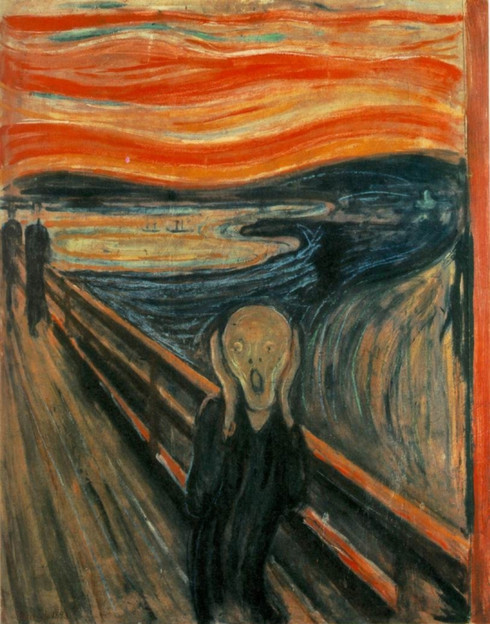Why should art speak to us at an emotional level?
I have to admit finding inspiration can be difficult and tedious, ideas can come and go as they please- choosing which ones should stay is the tough part. Once you’ve FINALLY elected a theme, you should start setting about the process by using a plan which can be another daunting roller-coaster but well worth it. Nevertheless, your idea should explore what emotions you want your artwork to reveal. Great works of art captures physiology’s basic ideas, they speak to us at a deep, emotional level and great artists know that depicting feelings and mood is more important than precise representations of their subject.
Let’s use something as simple as a bouquet of flowers, bright and colourful flowers draw in a blissful emotion and at the other end of the spectrum. Dark and shady colours are intended to make the viewer feel dejected or angry.
Getting a thought provoking image can illustrate a good story line and these accounts of imagery then stimulate emotions. As an artist, if you can capture an emotion from the viewer then you’ve done your job. Here are some steps to help you translate your idea into a visual image- a tangible image.
First things first, get inspired! Many great artists go through a list of different motivations to get inspired-its valuable to expand your horizons by considering some of the ideas of other artists.
1. Artists that create as part of a ritual, ceremony or cultural tradition have a specific purpose. This purpose has significance only within the art.
Clay Matcha Bowl
An example is the Chanoyu or tea ceremony-a ritualized, secular practice in which tea is consumed. The tea is consumed in an intimate setting, allowing the participants to withdraw from the mundane world (tranquility and harmony is felt in this ceremony). Tea practitioners admire the qualities in the glaze, shape and texture of the tea cup and seek to consider if its worthy of artistic merit. These tea cups are created for the purpose of a Japanese cultural tradition.
2. Artists that form a spiritual concept have the vision to express ‘creation’ which gives meaning to everything in life.
Hindu Temple Spires
Artworks that receive spiritual inspiration and guidance from a divine source convey spiritual messages to the uninitiated masses. Again the sense of peace and harmony are the focus of these pieces of art. A good example of this would be the temples in Hindu and Egyptian cultures, these works of art were carefully designed to symbolize mans path to enlightenment. The top tier or inner most sanctum of the temple represented the attainment of spiritual mastery. Initiates could spend many years meditating on the images to seek and learn the spiritual secrets they encoded.
3. Many masterful artists felt it was important to record history and many of their paintings will depict a historical event.
Matirio di San Matteo by Carravagio
In the Renaissance era, oil paintings where the means of recording visual data-telling the “truth” of what happened and what we need to know. Large and dramatic scenes were depicted presenting us with the reality of what occurred in the time of the event evoking intense and powerful emotions.
4. Teaching using visual language is the motive of some artists, and probably the oldest purpose of art.
Sistine Chapel Stain Glass windo
Images were used to teach and to help people remember religious concepts-for centuries the church was the primary patron of many artists. Viewers feel compelled to engage in the learning of the teachings making this kind of art influential in the behavior of others.
5. Reflecting on beauty is another way artists speak to their viewers.
Garden Path by Monet
People have broad notions of what is beautiful however there is a uniform opinion to what it is, generally speaking art that is pleasing to the senses will produce blissful emotions.
6. Provoking others to see something in a new way is another motivation artists have for creating art.
The Scream by Edward Munch
Stimulating a reaction or emotion can sometimes force the viewer to see or think differently-having this impact is very powerful as it can propel strong emotions and on occasion’s conflict.
7. As a narrative painter, I’m hugely influenced by the storytelling process- this would be another motive for artists to produce art.
"CALCULATED ORACLE: CAPRICORN"
by Siriaus
www.siriaus.comwww.siriaus.com
Title:
"EPICUREAN HEDONIST" (Taurus) :Project Member #4
by Siriaus
"Nothing is enough for the man to whom enough is too little" -Epicureus
Title:
"EPICUREAN HEDONIST" (Taurus) :Project Member #4
by Siriaus
"Nothing is enough for the man to whom enough is too little" -Epicureus
Art is a powerful means of storytelling with emotional roller coasters and those who have the ability to tell powerful stories and events in just one picture truly have a great gift. In this painting, "The Calculated Oracle", I tried to capture a feeling of authority-a character that has absolute power over his subordinates. His godly figure and the deep colours tell us he is someone of supremacy and we should be reluctant to do something for fear of the consequences.
What emotions do you have when looking at this image?
Obviously, there are many more sources of inspiration for artists-I’ve listed a few but it's up to you to use your imagination and come up with a piece of work that you’re proud of.
As always, I’m interested in seeing your feedback/thoughts, which you can add to the comments area below. If this was a helpful read-do sign up to the newsletter for more related info and share this post via social media. I will be very grateful!









No comments:
Post a Comment